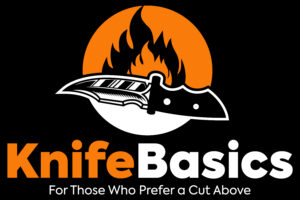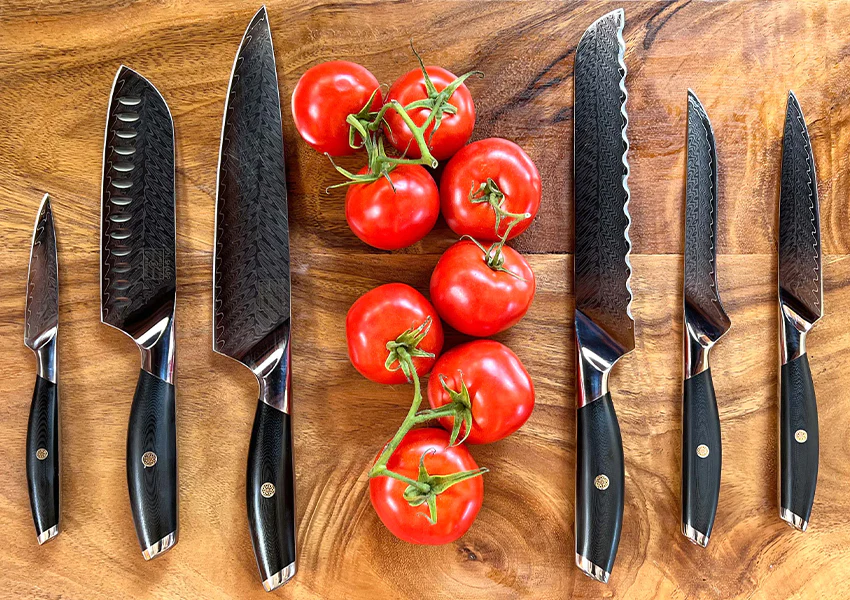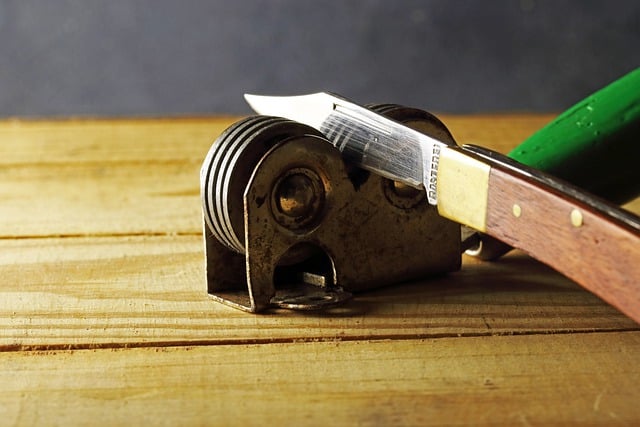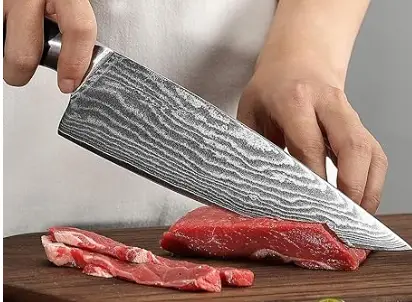Having the best vegetable knife for cutting vegetables gives you convenience and might save you a considerable amount of time in the kitchen. Not only do they boast high-quality materials, but great vegetable knife also have other pluses that make them better than the rest. Let’s find out which is the best vegetable knife for cutting vegetables that should be on top of your list.
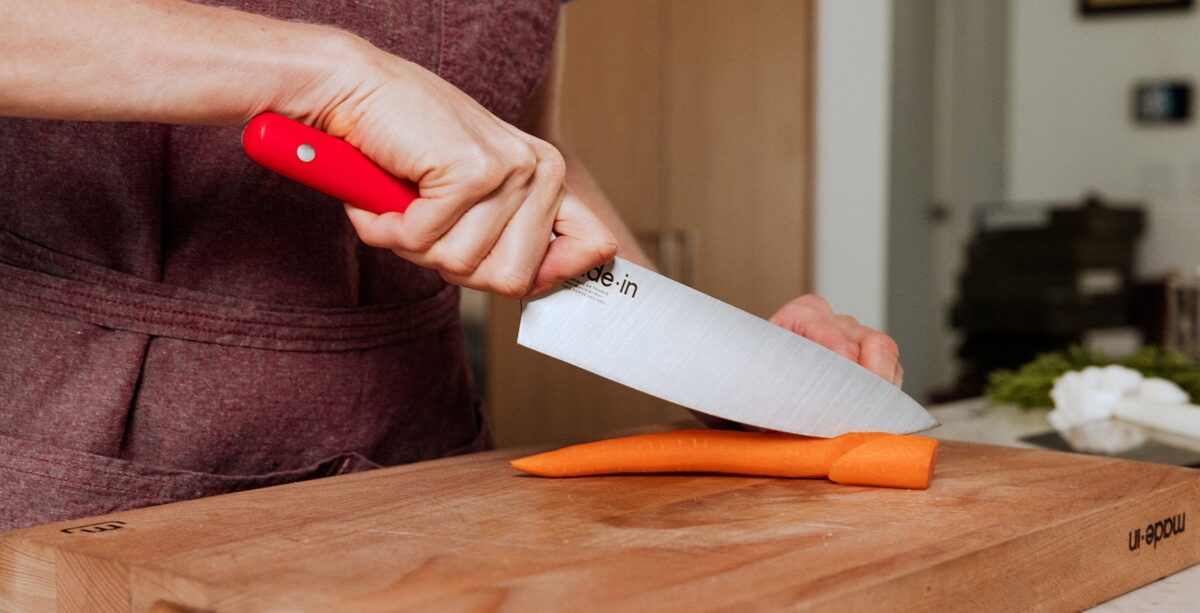
Factors To Consider When Choosing The Best Vegetable Knife
The best vegetable knives should not only be efficient in cutting products but should also improve your cooking efficiency. To find a kitchen knife that will give you such characteristics, here are some factors to consider.
Blade Design
The blade design is exceptionally crucial since it dictates the cutting and slicing process. A thin sharp blade will allow you the much-needed flexibility to achieve precise and clean cuts. Moreover, the presence of Granton edges should help in reducing sticking.
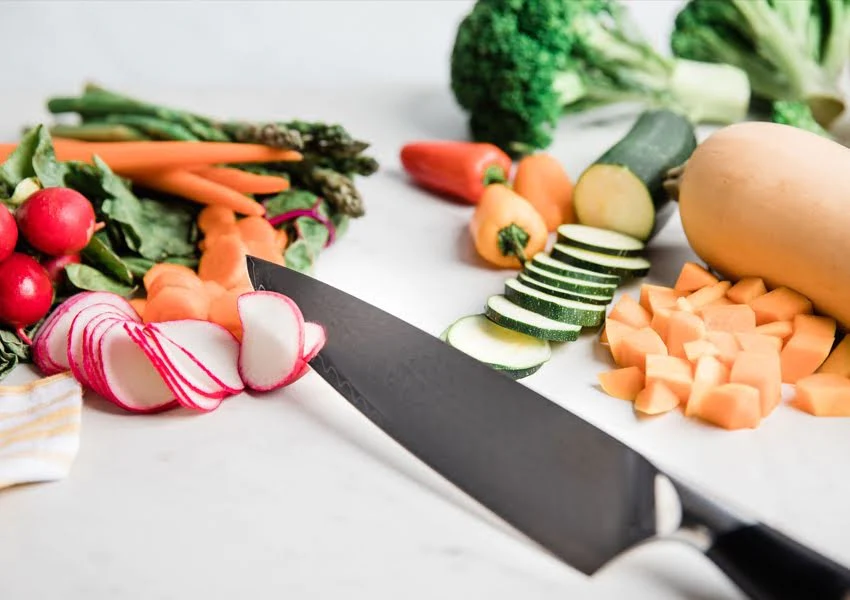
Blade Material
The best blade material for knives is high-carbon stainless steel. Besides providing you with corrosion resistance, such a knife also has good durability and is not hard to maintain.
Handle
A good handle should be comfortable to hold because of its prolonged use in the kitchen. Knives with ergonomic designs are highly recommended because they prevent slippage and enhance control while cutting vegetables.
Balance and Weight
A good knife should have the right weight which should not be heavy to offer flexibility. On the other hand, a proper balance is essential to provide stability and controlled cutting motion.
Blade Length
Length can be different depending on individual preferences and the size of the vegetables being cut. However, a blade length of 6-8 inches will offer a great balance between versatility and maneuverability.

Top Recommendations For Best Vegetable Knife For Cutting Vegetables
It is understandable if you find it hard to discover vegetable knives with all the qualities above. Thus, we will provide you with a list of the four best kitchen knives in the market and explain the pros and cons of each so you can make an informed decision.
[affiliatable id=’184367′]
1. Paudin Nakiri Vegetable Knife
The Paudin Nakiri Knife will elevate your vegetable cutting game by ensuring you get precision and ease when using it.
Specifications
- High carbon stainless steel
- Silver in color
- Plain blade edge of 56+ hardness
- A brand of Paudin
- Stainless steel
- Length of 7 inches
- Ergonomic handle
Pros
- Specialized design: The straight blade and squared-off tip facilitate precise slicing, dicing, and chopping.
- Balance and control: The well-balanced design of the Paudin Nakiri Knife ensures optimal control and stability during use.
- Affordable option: Paudin Nakiri Knives offer a budget-friendly option for those seeking a dedicated vegetable knife without breaking the bank.
Cons
- Limited versatility: Due to its specialized design, the Paudin Nakiri Knife may not be as versatile for other kitchen tasks beyond vegetable cutting.
- Blade thickness: Some users have mentioned that the blade of the Paudin Nakiri Knife is relatively thick, which can impact its performance when dealing with delicate or precise cuts.
[affiliatable id=’184370′]
2. The Santoku Vegetable Knife
Santoku Knife has a razor-sharp blade, balanced design, and unique Granton edge, which makes it excel at slicing, dicing, and chopping vegetables with unparalleled ease and efficiency.
Specs
- WLM brand
- Silver in color
- High carbon stainless steel
- Stainless steel handle
- Granton/ plain edge
- 7 inches blade length
- 1.35 pounds heavy
Pros
- Versatile: The Santoku knife excels at slicing, dicing, and chopping vegetables with precision.
- Granton edge: This design helps prevent food from sticking, allowing for smoother cutting and reducing the need for excessive force.
- Balanced design: This balance contributes to comfortable handling and controlled cutting motions.
Cons
- Limited length: Santoku knives typically have a shorter blade compared to other chefs’ knives. While this can be an advantage for maneuverability, it may be a drawback for individuals who prefer a longer blade for certain tasks or larger vegetables.
- Less suitable for heavy-duty tasks: Due to their thinner and narrower blade design, Santoku knives may not be the best choice for heavy-duty tasks that require more force, such as splitting large or dense vegetables.
[affiliatable id=’184373′]
3. Imarku Japanese Chef Knife
Imarku Japanese Chef Knife is crafted with the precision of a razor-sharp blade, making it a go-to choice for chefs and home cooks alike.
Specs
- Manufactured by Imarku
- Silver and brown
- High carbon stainless steel
- Plain blade edge
- Stainless steel handle
- 8 Inches blade length
- Ultra-sharp edge
- 0.41 pounds heavy
Pros
- Sharpness: The high-carbon stainless steel blade holds its edge well, allowing for precise and effortless vegetable cutting.
- Ergonomic handle: The ergonomic handle design provides a comfortable and secure grip, even during extended use.
- Versatility in various kitchen tasks such as slicing, dicing, and mincing.
Cons
- Blade fragility: The thin and sharp blade may be more prone to chipping or damage if mishandled or used on hard surfaces.
- Maintenance: As with any high-carbon stainless steel blade, proper care and maintenance are essential to prevent rust and maintain optimal performance.
[affiliatable id=’184376′]
4. Misen Chef’s Vegetable Knife
Misen Chef’s Knife combines exceptional craftsmanship, unbeatable performance, and affordability.
Specs
- A Misen brand
- Premium stainless AICHI AUS-10 steel
- Blue in color
- Stainless handle made of steel
- Plain blade edge
Pros
- Quality construction: The high-carbon stainless steel blade offers excellent durability, edge retention, and corrosion resistance.
- Convenience: The comfortable handle provides a comfortable grip, reducing hand fatigue during repetitive cutting tasks.
- Affordability: Affordable price without compromising on quality when compared to other high-end chef’s knives.
Cons
- Weight distribution: The weight distribution leans more towards the blade rather than the handle.
[affiliatable id=’184379′]
Which Is The Best Vegetable Knife For Cutting Vegetables?
The Santoku knife stands out as the best knife for cutting vegetables due to its versatility, balanced design, and Granton edge. The small hollow indentations on the blade’s surface create air pockets, reducing friction and preventing food from sticking to the blade. This feature enhances the slicing and chopping experience, making it easier to work with thinly sliced or sticky vegetables.

It excels in slicing, dicing, and chopping vegetables with precision. The balanced design will give you comfortable handling and controlled cutting motions, while the Granton edge reduces sticking, making vegetable cutting easier. Overall, the Santoku knife combines functionality and precision, making it an excellent choice for vegetable preparation.
Final Thoughts
Ultimately, the best vegetable knife for cutting vegetables is one that meets your specific needs and feels comfortable in your hand. Take into account the blade quality, handle comfort, balance, and versatility when making your decision. By choosing a high-quality vegetable knife that suits your preferences, you can elevate your vegetable-cutting experience and achieve professional-level results in your culinary endeavors.
More Vegetable Knives

